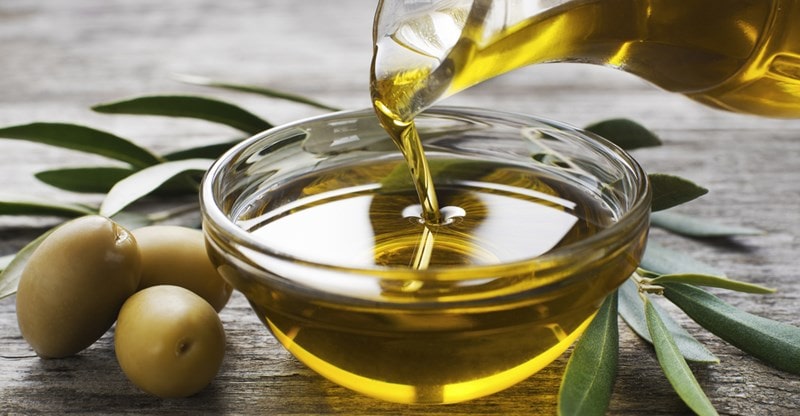Ever Wondered How Olive Oil Is Made? Here’s A Quick Rundown Of The Process
Olive oil is a liquid fat originating from the fruit of the olive tree, traditionally extracted by pressing whole olives.
It has sometimes been the secret element to your favorite recipes and seldom your grandmother’s prescription for any skin problem.
As it is counted among the healthiest forms of fat, it is one of the most widely used vegetable oils in use today. It is commonly used in cooking and is also extensively used by the cosmetic and pharmaceutical industries.
The olive tree is, in fact, a traditional tree crop in the Mediterranean Basin, and one of the core food plants in Mediterranean cuisine.
Evidence suggests that olive trees have been cultivated around the Mediterranean since the 8th millennium BC and olive oil was produced as early as the 4th millennium BC.
Today, the top five producers of olive oil by volume are Spain, Morocco, Turkey, Greece, and Italy, while Greece leads in per capita national consumption.
There are three grades of olive oil available: extra virgin olive oil (EVOO), virgin olive oil, and olive pomace oil (OPO). You might be aware that extra virgin olive oil benefits your body in numerous ways and is the best for regular consumption.
Ever Wondered How Olive Oil Is Made?
Given that olive oil is so popular, have you ever wondered how it is made? While most vegetable oils are extracted from seeds, olive oil is among those vegetable fats extracted from the fruit.
There are several methods of olive oil extraction.
The Traditional Method Of Making Olive Oil
Traditionally, ripe olives are either directly handpicked from the trees or picked up from the ground where they have fallen off.
Then they are cleaned and go through several rounds of crushing, pressing, and rinsing to extract the oil. This oil is then left to settle and separate from the water and other impurities.
The decantation process is repeated many times.
Harvesting And Cleaning
The traditional way of harvesting olives is a time-consuming and labor-intensive process as the olive fruits are handpicked.
After picking, it is time to remove the stems, leaves, twigs, and other debris from the olives. Then the olives are cleaned with water to remove the pesticides and dirt.
Grinding
The olives are transported to the grinding mills and are processed using traditional grindstones that are vertically mounted and rotate in a tub.
Upon grinding, the olives are reduced to an oily paste from which oil can be extracted.
Separating The Oil From Water And Other Impurities
The next step is to separate the olive oil from the other components in the paste obtained. This is traditionally done with presses.
The oil extracted through pressing is in a raw form and contains many impurities. After several stages of purification, you get traditionally pressed extra virgin olive oil.
The Modern Method Of Extracting Extra Virgin Olive Oil
While extracting oil from olives is an age-old practice, the process went through much modernization in the 20th century, resulting in the extraction of oil that is remarkably superior in quality.
The best extra virgin olive oil is manufactured through natural cold-pressing and minimal filtration to retain the beneficial nutritive value of olives.
Harvesting And Transportation
The variety and maturation of the olives determine, to a large extent, the quality of the olive oil extracted. Since olives need to be processed soon after picking, farmers often start the picking process at sunrise.
Modern companies use tree shakers, branch shakers, tree rakes, and electric olive harvesters for the purpose. The olives are transported to the factories soon after harvesting.
Cleaning The Olives
At the facility, any stems, branches, and leaves are removed from the olives. The olives might even be polluted with broken glass shards, pieces of metal, or plastic bits that need to be removed.
The olives are then rinsed well with water to wash away the dirt and pesticides.
Grinding The Olives
Modern, partially or fully automated olive mills have metal crushers that operate at high speed. The olives are now ground to form an oily paste.
Despite their high speed, modern machines for oil extraction are designed to avoid overheating of the paste as extra virgin oils must not exceed 27˚C (80° F) at any step in the processing.
Malaxing
The olive paste is then malaxed (mixed) for 20 to 45 minutes. This process allows small droplets of oil to combine into bigger ones.
To increase the yield, some manufacturers might heat the paste or add water during this process. However, doing so results in lowering the quality of the oil.
The most commonly used malaxer is a horizontal trough with spiral mixing blades.
Centrifugation
The next step is to separate the olive oil from the water and other vegetable substances. Centrifugation is the preferred method for the separation of components from a solution.
An industrial decanter is used for this process. The oil extracted from the first centrifuge is further processed to remove any remaining olive solids and water by a second centrifuge.
Finally, the oil is decanted and lightly filtered, if desired.
Alternative Configurations
The quality of olive oil depends on the quality of olives used, the time lag between the harvesting and extraction, and the extraction method itself.
To maximize oil quality, some producers combine the traditional grinding method with a modern decanter.
This technique results in high-quality oil as it allows for more selective grinding of the olives and reduces the malaxation time, thereby bringing down the chances of oxidization.
However, this method is not feasible on a large commercial scale and is used only by small scale olive oil manufacturers who focus on producing very high-quality olive oil.
In Closing
The modern equipment and technology used by most large-scale olive oil manufacturers today ensure that only the best quality oil reaches your hand.
While extra virgin olive oil goes through cold-pressing and minimal filtration, lighter tasting olive oils undergo more refining to remove the strong natural taste of olives and impart a more neutral flavor.
With different varieties of olive oils available in the market, you can choose the ones best suited for your culinary needs!



